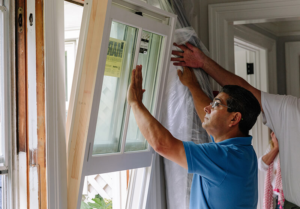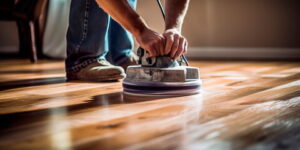Replacing old windows is a major project that will impact both the exterior look of your home and the level of interior comfort. The best window replacement companies understand this.
The company should offer financing options to help you afford the cost of installation and maintenance. A nontransferable warranty is also important. Contact Maryland Window Replacement now!

Window replacement can be a great way to upgrade the look and feel of your home. However, it can also be a substantial investment. It is important to carefully consider your options before making a purchase. The type of window you choose will impact both your upfront costs and the return on your investment. In addition, several other factors influence the cost of replacing windows.
The window unit makes up 65% to 75% of the total cost of a new window. The rest of the expenses come from installation. Labor rates vary by state, and a job’s complexity will also affect labor costs. For example, installing larger windows may require more work than smaller ones. In addition, removing and disposing of the old window can add to the overall project costs.
A new window will improve your home’s energy efficiency and reduce its utility bills. It will also increase the value of your home and boost its curb appeal. However, before replacing your windows, ensure they need repair or replacement. A few signs that your windows need to be replaced include a drafty feeling, condensation, and higher energy bills.
In general, double-pane insulated windows cost about $400 each with installation. Triple-pane insulated windows are more expensive but offer better energy efficiency. If you’re considering upgrading to an insulated window, ensure it is Energy Star-certified to ensure maximum savings.
The frame material of your window will impact the total installation and materials cost. Vinyl frames are the most affordable, while fiberglass and wooden frames are more expensive. Fiberglass and wood frames are also more durable than vinyl. However, they do not offer as much insulation as vinyl.
Other factors that can drive up the cost of a window replacement include customizations and additional features such as energy-saving coatings. You can also expect to pay more for a bay or bow window than a standard single-hung window. Additionally, if you have to remove and replace siding or drywall, this will add to the total project cost.
Some window companies claim that replacing windows with energy-efficient ones can save homeowners enough money on energy bills to pay for the cost of the replacement windows. While this is true to some extent, it depends on the number of windows replaced, the type, and the climate. Moreover, a home with single-pane windows would likely need to replace all of them to see significant savings.
If you’re considering window replacement, it’s important to consider the frame and sash material. Vinyl, fiberglass, and wood frames are the most popular options as they are durable and offer superior insulating properties. Wood windows also provide a classic look that is popular in historic districts and neighborhoods. However, wood is more expensive than other materials and requires regular maintenance.
Double-pane windows with insulating glass and a low SHGC (Solar Heat Gain Coefficient) and U-factor can be the best way to improve your home’s energy efficiency. These windows are ideal for most climates, although homes in extreme climates may benefit from triple-pane or fiberglass models.
It’s recommended to hire a licensed contractor for the installation process. Window installations are complicated, and it’s easy to mess up the installation if you attempt to do it yourself. In addition, a professional contractor can recommend the right window glass, such as insulated or tempered, and help you select a reputable brand that will last decades.
Sometimes, a homeowner can receive rebates on their new window purchase from their local energy company for installing ENERGY STAR-rated windows. These rebates can offset the cost of a replacement window or door and make it more affordable to upgrade your home.
The benefits of window replacement include:
- Reduced heating and cooling costs.
- Reduced fading of interior surfaces and fabrics.
- Increased curb appeal.
- Improved indoor comfort.
If you want to upgrade your Anne Arundel County home with new windows, contact us today for a free consultation. Our team of experts will be happy to walk you through your options and provide a quote that’s good for a year!
The appearance of your home’s windows is important because they let light enter the house and contribute to its design style. The materials and color of the frames also have a big impact. Window replacement is an opportunity to update the look of your home’s exterior and interior. It is also a great time to consider energy-efficient options that reduce heating and cooling costs.
There are several signs that you should consider replacing your existing windows: a draft, condensation between the panes, or the fact that they are rotting or warping. Another sign is that your energy bills are getting higher. One reason may be that the seals in your existing double-glazed windows are failing and letting cold air in or hot krypton out.
When you decide to replace your existing windows, there are three basic options: sash kits, insert windows, and full-frame windows. Sash kits give your old windows new movable parts and can be used with single- or double-hung windows. The new liners are fastened to the side jambs of the existing window opening, and the sashes are slipped in between. This option is ideal if the existing frames are not rotted.
Full-frame windows have an entirely new frame built around them, and they are used when the original frames are in such bad condition that they must be replaced. It is important to note that this option requires more work than the other two and can be more expensive. When deciding on this option, it is important to consult with your contractor about the conditions of your existing frames.
If you have real wood window frames, they require regular maintenance to keep them in good condition. Leaving them unattended can lead to rotting and other problems that may eventually cause them to collapse. In some cases, the best option is to replace the window.
If a problem is spotted early, it may be possible to repair your windows and save money. For example, if your windows are stuck or hard to open, it could be due to worn cords on sash weights, or the sash itself might have come off the track. This type of repair is usually straightforward for a professional.
You can also reduce the corrosive salt on your windows by cleaning them at least four times yearly with a mild detergent and water solution. This will help prevent damage to the frame and sills.
It is important to check the caulking around your windows for cracks and leaks. These are not only costly to fix, but they can also be a health hazard. If you notice signs of mold or wood rot, these must be addressed immediately to prevent the spread of toxic spores.
Chipped paint is another common window repair issue, but it can be easy to address by hiring a Mr. Handyman of Anne Arundel and North PG technician to sand and repaint the exterior of your home. They can also re-caulk any areas that are leaking.
Fogged windows are often caused by condensation, which you can easily reduce by increasing ventilation. It’s also worth checking for any rot, fungus, or mold in the window frame. Moisture build-up can lead to rot and other structural issues in your home, which is dangerous for your family’s health.
If you have trouble with your windows, consider replacing them with new, energy-efficient models. Window replacement is an investment, but it will be worth the expense of lower heating and cooling bills and a more comfortable home.
